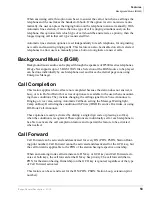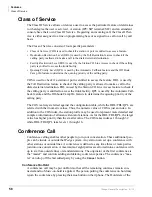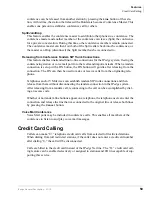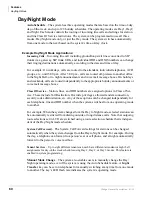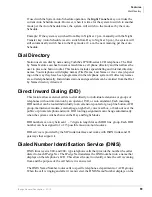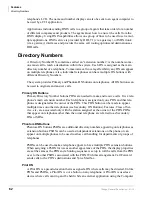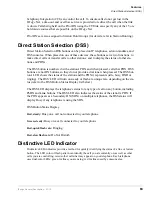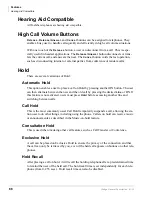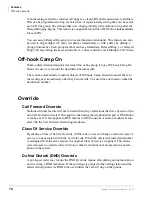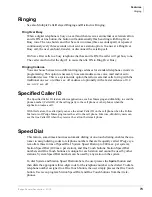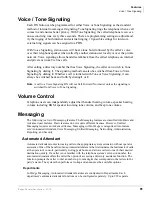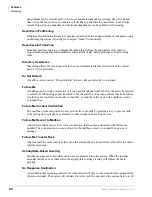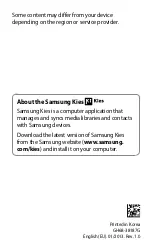
Features
Hot Dialing
IPedge General Description 01/12
67
Hot Dialing
Hot dialing enables the telephone user to begin on-hook dialing without pressing a
Line
or
DN button. The station can be programmed to automatically select a
Line
or PDN button
when the dial pad is pressed while the station is idle. This saves a keystroke by not requir-
ing the station user to press a DN or
Line
button to begin on-hook dialing. On-hook dial-
ing saves time by not requiring the station user to lift the handset to begin dialing.
Hotline Service
If a station remains off hook for a programmable period, it can automatically be directed
(immediately or with a delay) to a pre-programmed destination. The station may have par-
tially dialed a number or have dialed no digits at all.
Each station is programmed with its specific ring down destination. This is particularly
useful in applications where employees, patients, or guests are not expected to know
where to call for help at different times of the day. This feature is compatible with standard
and digital telephones.
IP
edge
Net
IP
edge
Net is a private networking application based on QSIG, an international standard
for interconnecting telephone systems. IP
edge
Net delivers a rich set of calling features
across multiple systems throughout the enterprise. Users benefit from transparent dialing
and simple feature operation.
Advanced networking features include Centralized Voice Mail, Centralized Attendant,
Network SMDR, and Station DSS button appearances across all nodes. Alternate routing
provides for toll bypass configurations and automatic recovery from network disruptions.
IP
edge
Net provides full connectivity and capabilities over an IP network (VPN WAN,
Internet, intranet Frame Relay, fiber, or wireless).
Up to 128 nodes can be accommodated within the IP
edge
Net numbering plan. As with
any network design, transport delay, speech volume and other issues must be carefully
considered.
You can set up network DN tables across nodes. Through system programming, you can
attach a node ID to non-redundant DNs, PhDNs, and Pilot numbers. This enables someone
in one node to call an extension in another node without having to dial the node ID num-
ber. The caller dials the extension and the system automatically routes the call to the node
in which the called extension is located and rings the called extension.
Содержание ID EDGE
Страница 1: ...TOSHIBA Telecommunication Systems Division January 2012 General Description Title Page ...
Страница 6: ...This page is intentionally left blank ...
Страница 12: ...This page is intentionally left blank ...
Страница 24: ...This page is intentionally left blank ...
Страница 128: ...This page is intentionally left blank ...
Страница 134: ...This page is intentionally left blank ...
Страница 142: ...This is the last page of the document ...

